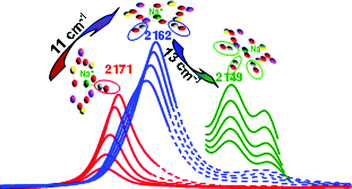How does CO capture process on microporous NaY zeolites? A FTIR and DFT combined study†
Abstract
Reliable experimental

* Corresponding authors
a
UPPA-UFR Sciences & Techniques BP1155, 64013 Pau, France
E-mail:
olivier.cairon@univ-pau.fr
b
CNRS-Université Pierre et Marie Curie, Laboratoire de Réactivité de Surface, UMR 7197 CNRS, 4 place Jussieu, 75252 Paris, France
E-mail:
hazar.guesmi@upmc.fr
Reliable experimental

 Please wait while we load your content...
Something went wrong. Try again?
Please wait while we load your content...
Something went wrong. Try again?
O. Cairon and H. Guesmi, Phys. Chem. Chem. Phys., 2011, 13, 11430 DOI: 10.1039/C1CP20086K
To request permission to reproduce material from this article, please go to the Copyright Clearance Center request page.
If you are an author contributing to an RSC publication, you do not need to request permission provided correct acknowledgement is given.
If you are the author of this article, you do not need to request permission to reproduce figures and diagrams provided correct acknowledgement is given. If you want to reproduce the whole article in a third-party publication (excluding your thesis/dissertation for which permission is not required) please go to the Copyright Clearance Center request page.
Read more about how to correctly acknowledge RSC content.
 Fetching data from CrossRef.
Fetching data from CrossRef.
This may take some time to load.
Loading related content
